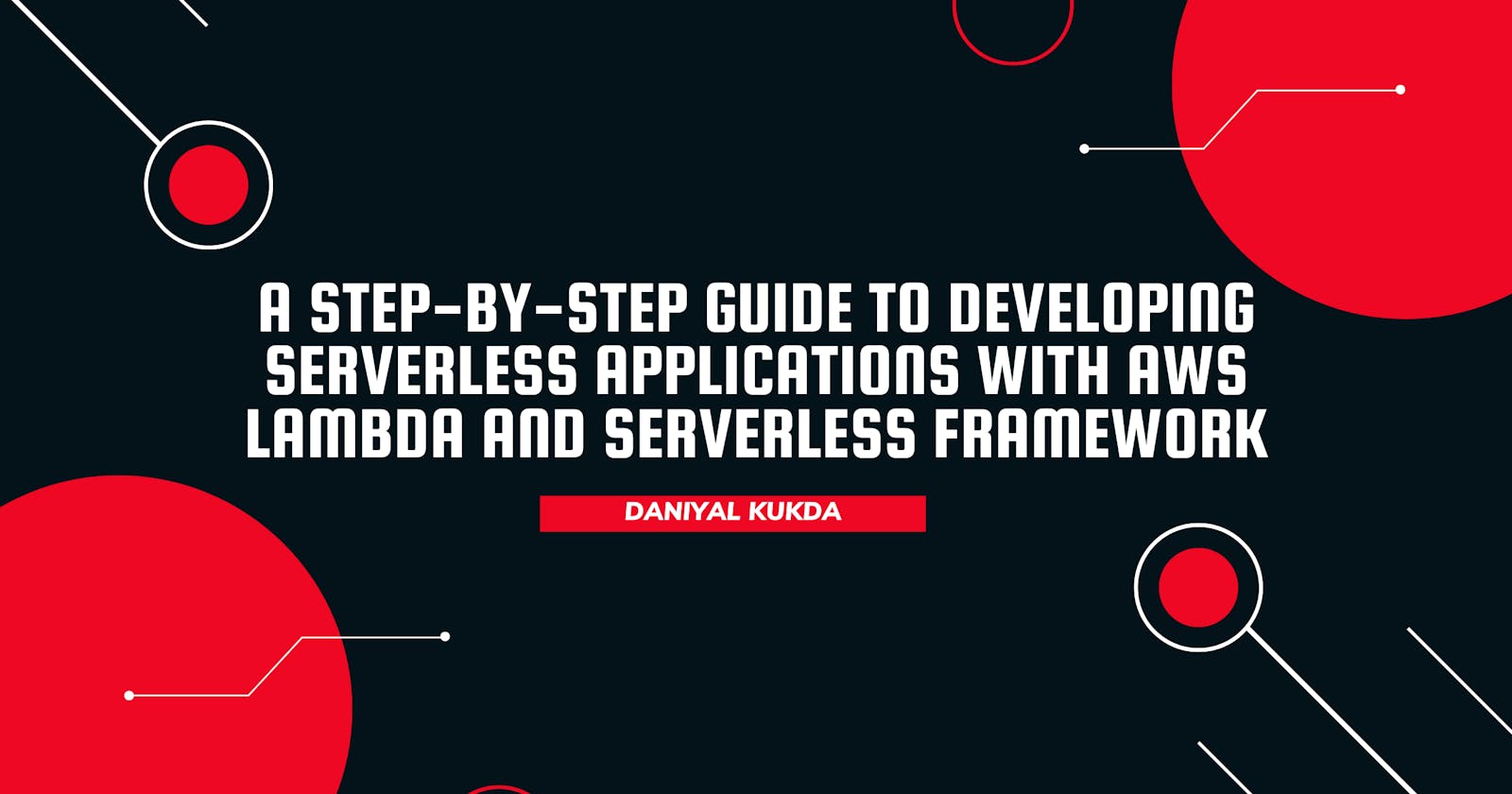A Step-by-Step Guide to Developing Serverless Applications with AWS Lambda and Serverless Framework
Hello & Assalam o Alaikum Everyone! 👋
Serverless computing has gained popularity among developers in recent years as it allows them to focus on the application logic without having to worry about infrastructure management. The Serverless Framework is a powerful tool that allows developers to easily build and deploy serverless applications using different cloud providers. In this post, we will provide a tutorial on how to develop a serverless application using the Serverless Framework with AWS Lambda and API Gateway.
Let's jump in 🚀
Prerequisites:
Before we start, you will need to install the following:
Node.js and npm - You can download Node.js and npm from the official website: Link
Serverless Framework - You can install the Serverless Framework by running the following command in your terminal:
npm install -g serverlessAWS CLI - You can download the AWS CLI from the official website: Link
AWS Account - You will need an AWS account to use the AWS services. (How to Create an AWS account)
Step 1: Create a New Serverless Application
To create a new serverless application, you can use the Serverless Framework CLI by running the following command in your terminal:
sls create --template aws-nodejs --path my-service
This command will create a new serverless application in a folder called "my-service" with the AWS Node.js template. You can change the template to another language if needed.
Step 2: Writing a Simple Lambda Function
Now that we have created a new serverless application, let's write a simple Lambda function that will be triggered by an HTTP request. In the "my-service" folder, create a new file called "handler.js" and add the following code:
module.exports.hello = async (event) => {
return {
statusCode: 200,
body: JSON.stringify({
message: 'Hello, World!'
})
};
};
This code exports a Lambda function called "hello" that returns a simple JSON response with a "message" property.
Step 3: Configuring the API Gateway
To make our Lambda function accessible through an HTTP endpoint, we need to configure an API Gateway. In the "serverless.yml" file in the root of your project, add the following code:
service: my-service
provider:
name: aws
runtime: nodejs14.x
functions:
hello:
handler: handler.hello
events:
- http:
path: /
method: get
This configuration sets up the AWS provider and defines a single Lambda function called "hello" that will be triggered by an HTTP GET request to the root of our API Gateway.
Step 4: Deploying the Serverless Application
To deploy our serverless application to AWS, we can use the Serverless Framework CLI by running the following command:
sls deploy
This command will package and deploy our application to AWS Lambda and API Gateway.
Step 5: Testing the Serverless Application
Once our serverless application is deployed, we can test it by sending an HTTP request to the API Gateway endpoint. You can find the endpoint URL in the output of the "sls deploy" command. Open a web browser and navigate to the endpoint URL, and you should see the "Hello, World!" message.
Conclusion:
In this tutorial, we have learned how to develop a serverless application using the Serverless Framework with AWS Lambda and API Gateway. We covered the development process, including choosing the appropriate language and framework for your project, testing and debugging your code, and deploying it to the cloud. By using the Serverless Framework, we can focus on writing the application logic without having to worry about infrastructure management.
I hope you enjoyed reading this article! If you found it helpful, please consider sharing it with your friends and colleagues. Additionally, if you have any resources or tips related to the serverless framework that you'd like to share with our community, please do so in the comments section below. Your contribution could help others on their journey toward mastering Serverless Architecture.
Thank you for your support! ❤️ Don't forget to 👉 Follow Me: on GitHub, Twitter, LinkedIn, and Youtube for more informative content.
